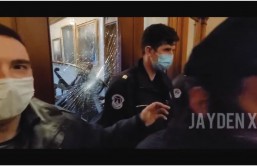NASA has released footage of its flying saucer-shaped spacecraft, the Low-Density Supersonic Decelerator (LDSD), successfully completing a June 28 flight test.
Scientists have been trying to facilitate the flight test since June, but have postponed the experiment several times due to the unstable weather conditions and technical problems.
Finally, the test vehicle was successfully launched in late June from the Pacific Missile Range Facility at the U.S. Navy located in Kauai, Hawaii. The test aimed to find out whether the rocket-powered vehicle could reach certain altitudes and endure extreme air pressure.
During the shakeout flight, two new technologies were also deployed as payload carried by the same type of test vehicle. The Supersonic Inflatable Aerodynamic Decelerator (SIAD) was a doughnut-shaped air brake designed to deploy after the launch to decelerate the spacecraft. The second device was the 100-foot wide Supersonic Disksail Parachute, which was also used by the Mars Science Laboratory (MSL). The disksail parachute was used in transporting the Curiosity rover safely to Mars' surface.
"A good test is one where there are no surprises, but a great test is one where you are able to learn new things, and that is certainly what we have in this case." Ian Clark, principal investigator for LDSD at NASA's Jet Propulsion Laboratory in Pasadena, California said in a press release.
The LDSD test launch used a balloon that carried the 7,000-pound vehicle and its SIADs up to a height of 23 miles. It also carried several units of high-definition video cameras. These cameras capture images that will enable researchers to evaluate the vehicle's performance in high altitudes and never before-reached Mach numbers. The experimental flight test will also determine whether it is possible to deliver large payloads to various destinations in our Solar System, including Mars.
The LDSD project was funded by NASA's Space Technology Mission Directorate, and is also supported by the Jet Propulsion Laboratory in Pasadena, Calif.








